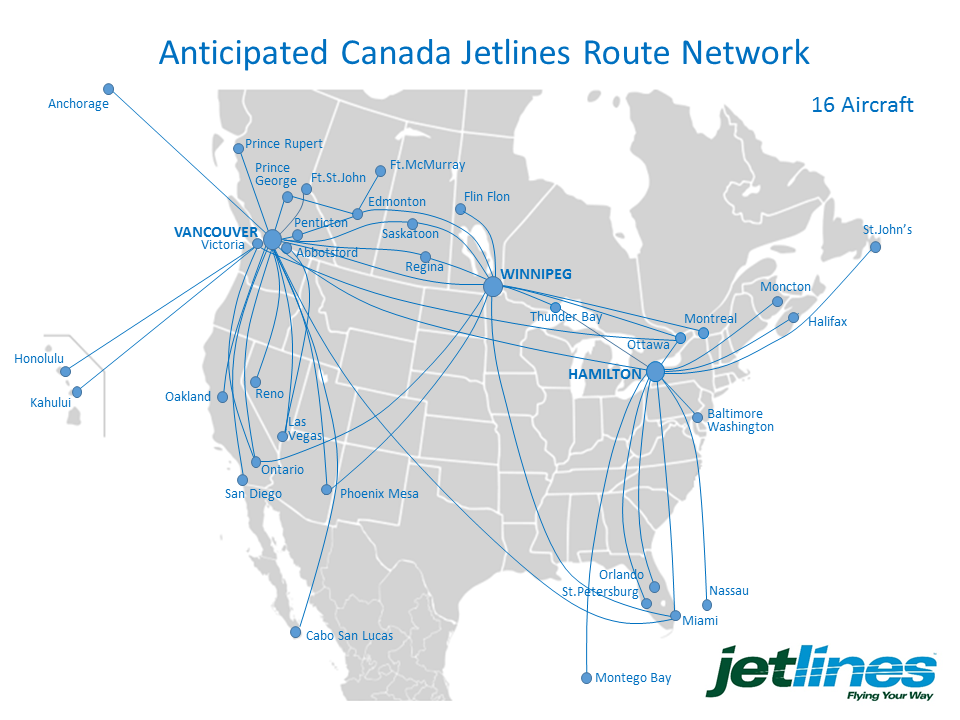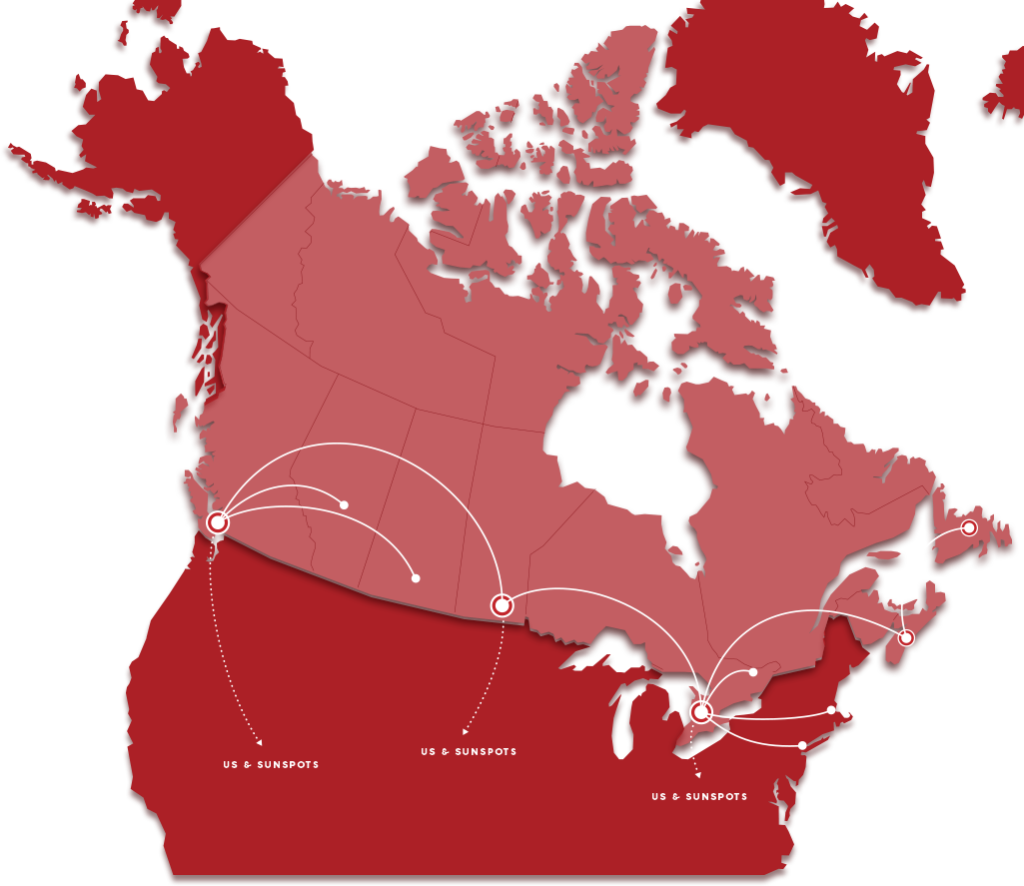Posts: 2,441
Threads: 8
Joined: Aug 2014
Reputation:
64
Usually frequency is more important than speed, I agree, but I agree with timc when he says "If it's worth spending $200 round trip to go to a meeting in downtown Toronto, you can probably schedule the meeting around the flight." As a relative grunt in my organization, I still have plenty of ability to organize meetings with clients around the train schedule from Kitchener. If you're spending hundreds to save an hour or so on the train that could still be productive, you likely have plenty of influence over meeting times.
I still doubt it makes sense here, and wouldn't imagine they would fill the plane too often. And, though I know this isn't a big consideration for many, the carbon footprint of flying ninety kilometres is significantly more than taking a car or train.
Posts: 10,633
Threads: 67
Joined: Sep 2014
Reputation:
348
(04-19-2017, 07:13 PM)MidTowner Wrote: I still doubt it makes sense here, and wouldn't imagine they would fill the plane too often. And, though I know this isn't a big consideration for many, the carbon footprint of flying ninety kilometres is significantly more than taking a car or train.
Best-case scenario: 8 pax, maybe 80L of fuel per flight (rated at 29.7 USg/h), so 10L/pax. No worse than driving a largish car or mid-size SUV to downtown, assuming no carpooling.
Of course the carbon footprint goes up rapidly as the number of passengers drops.
Posts: 1,101
Threads: 6
Joined: Aug 2014
Reputation:
99
05-09-2017, 04:46 PM
(This post was last modified: 05-09-2017, 04:47 PM by Coke6pk.)
Forwarded on behalf of the Southern Ontario Airport Network (SOAN)
NOTE: The Region of Waterloo International Airport is a member of SOAN
Southern Ontario Airport Network working to unlock benefits of aviation demand for the region
With air travel demand forecast to outpace the current capacity of the region’s airports, a group of eleven Southern Ontario airports have responded with the launch of the Southern Ontario Airport Network (SOAN) at an event today. The group, comprised of eleven of the region’s most commercially significant airports, is dedicated to making sure the growing demand for air travel in Southern Ontario, which is expected to reach approximately 110 million passengers by the early 2040s, is supported.
Members of the Southern Ontario Airport Network include: Toronto Pearson International Airport, Billy Bishop Toronto City Airport, Hamilton John C. Munro International Airport, Kingston/Norman Rogers Airport, Lake Simcoe Regional Airport, London International Airport, Oshawa Executive Airport, Niagara District Airport, Peterborough Airport, Region of Waterloo International Airport, and Windsor International Airport. Transport Canada and Ontario’s Ministry of Transportation are also important contributors to SOAN’s work.
Among the short, medium and long term goals of the SOAN are:
• completing an economic analysis of the impact of the Southern Ontario Airport Network for our communities, the region and the province;
• understanding the ground transportation needs in Southern Ontario and advocating for investment in ground transportation improvements that will reduce congestion and greenhouse gas emissions; and,
• developing best-in-class strategies for responsible and sustainable airport growth including community engagement and noise management.
In conjunction with the launch event, the SOAN released a statement of intent titled, “Flying Together: The Southern Ontario Airport Network.” The paper emphasizes that planning for growth in a responsible way is essential; without it, the region could potentially leave $15 billion in GDP on the table and force more than 20 million passengers to look elsewhere for their air travel needs.
The members of the SOAN recognize that the region has the potential, given its many air transportation assets, to meet the growing demand for air travel. Through responsible planning, the SOAN will ensure that the region is well placed to keep the jobs and economic benefits of air service demand in Southern Ontario.
The full statement of intent is available online: www.SOAirportNetwork.com
“Our forecast tells us that by 2043 aviation demand will be around 110 million passengers. When we look at what the current capacity amongst airports in the region, we would be leaving 20 million passengers ‘on the table’ if we don’t take action now. Thankfully, we have a network of great airports, who have come together to start brainstorming ways to capitalize on this incredible opportunity.
We know that the efficient movement of people and goods to and from our region is an important part of Canada’s broader supply chain, and that we have a role in enabling economic prosperity through our actions and investments. As we look to the future of this growing region, we know that each of our airports can play a greater role in supporting our local and regional economies.” -Howard Eng, President and Chief Executive Officer of the Greater Toronto Airports Authority.
"The projected shortfall in airport capacity in Southern Ontario played a major part in the Region of Waterloo International Airport’s recently released 20 year Master Plan and is tied directly to the unprecedented growth in projected air travel demand. Being part of the Southern Ontario Airport Network gives YKF an advantage and a voice in better understanding upcoming opportunities and planning for infrastructure investment for our community.” - Chris Wood, Region of Waterloo International Airport General Manager
Media contact - contact@soairportnetwork.com
The Southern Ontario Airport Network is comprised of eleven commercially significant airports in Southern Ontario: Toronto Pearson International Airport, Billy Bishop Toronto City Airport, Hamilton John C. Munro International Airport, Lake Simcoe Regional Airport, London International Airport, Oshawa Executive Airport, Niagara District Airport, Peterborough Airport, Region of Waterloo Airport, Windsor International Airport. Located in Canada’s most economically productive and fastest growing region, each airport shares the goal of utilizing the available capacity at their airports to support the diverse needs of their communities and in turn, developing economic opportunities locally, regionally, provincially and nationally. For more information: www.SOairportnetwork.com
Posts: 32
Threads: 0
Joined: Feb 2016
Reputation:
0
https://runwaygirlnetwork.com/2017/05/16...i-fi-pays/
article about jetlines focus on ROW international airport
Posts: 495
Threads: 1
Joined: Jan 2015
Reputation:
20
05-16-2017, 11:48 PM
(This post was last modified: 05-16-2017, 11:49 PM by Elmira Guy.)
/\ Nice link!
From the article.
"But the major southern Ontario focus for Jetlines will be Region of Waterloo International Airport, which serves the cities of Kitchener and Waterloo. Major IT companies such as Google have their main Canadian offices around Kitchener and Waterloo, so the area represents “Silicon Valley North”, according to Scott. “But they only have one [domestic trunk] flight, to Calgary – they have no other connectivity.”
Posts: 395
Threads: 1
Joined: Sep 2014
Reputation:
9
This quote from the article also has me excited:
Quote:The carrier plans to base half its fleet at Vancouver and half at Region of Waterloo International Airport.
Posts: 1,101
Threads: 6
Joined: Aug 2014
Reputation:
99
ANY news of airlines coming here would get me excited! Its a very slow day here... every day....
Posts: 996
Threads: 21
Joined: Aug 2014
Reputation:
61
Jetlines homepage indicates that the hub would be Waterloo Region and/or Hamilton.
Quote:Jetlines’ “clean sheet” ULCC business plan also opens up for jet air service many of Canada’s secondary airports that lack this type of service, but have demonstrated a strong business case for jet service into their communities. Jetlines plans to operate scheduled point-to-point all jet air service with primary bases at the Vancouver International Airport ("YVR") and Southern Ontario (Hamilton International Airport (“YHM”), and/or Region of Waterloo International Airport (YKF)), with a secondary base at the Winnipeg International Airport (“YWG”). This is consistent with the May 9, 2017 announcement that established the Southern Ontario Airport Network (“SOAN”) of eleven airports that surround Toronto. The focus of SOAN is to enhance air transportation service and capacity in the region and the low fare air service that will be offered by Jetlines will directly serve this goal. Jetlines can confirm that it has commenced negotiations with some of the SOAN member airports with the intent to operate ULCC flights using these airports.
A few months ago it looked like they would use Hamilton as a hub. Today, they seem to be leaning towards Waterloo Region.
Send them love (emails) if you want them to use YKF as a hub.
Posts: 996
Threads: 21
Joined: Aug 2014
Reputation:
61
 06-08-2017, 07:05 AM
06-08-2017, 07:05 AM
This route map for Jetlines is over two years old and before YKF was put into the mix. It will be interesting to see if YKF gets any or all of the routes that was planned for Hamilton.

From their site:
Quote:Jetlines is currently in the government airline licensing process and plans to operate an ultra-low cost carrier (“ULCC”) airline throughout Canada and provide non-stop jet service from Canada to the United States, Mexico and the Caribbean
So we wait some more.....
Posts: 395
Threads: 1
Joined: Sep 2014
Reputation:
9
Getting all of those routes originally planned for Hamilton would be incredible.
Posts: 1,101
Threads: 6
Joined: Aug 2014
Reputation:
99
I would be the happiest person in this forum if this happens! (Well maybe Chris Wood, but I haven't seen him in here in a LONG time!)
Coke
Posts: 896
Threads: 2
Joined: Aug 2014
Reputation:
11
I wouldn't be too choked up if Hamilton got it, but it would be a huge boost for YKF. I'd rather see one or both of them become the relief airport for Pearson instead of building Pickering.
Posts: 4,443
Threads: 1
Joined: May 2015
Reputation:
204
(06-09-2017, 09:33 PM)DHLawrence Wrote: I wouldn't be too choked up if Hamilton got it, but it would be a huge boost for YKF. I'd rather see one or both of them become the relief airport for Pearson instead of building Pickering.
Very much so. If it’s built, Pickering will be the biggest white elephant since Mirabel, especially if HSR from Toronto to Montreal is also built.
Posts: 6,905
Threads: 32
Joined: Oct 2014
Reputation:
224
Mirabel  
Posts: 996
Threads: 21
Joined: Aug 2014
Reputation:
61
Jetlines has updated their webpage and their 'conceptual' route map but they don't indicate which city in Southern Ontario will be their hub. But looking closely at the map I'm pretty sure YKF will be their eastern hub. Do you agree or am I misreading the map?

|





